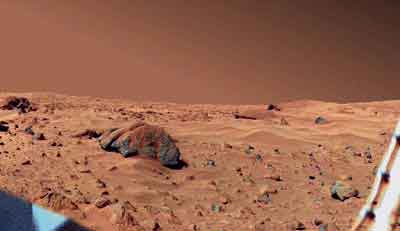 Mars
MarsPlanets in the Solar System
Mars
Mars Mars
Mars
QueSPER Research Plan and Note-taking Worksheets
 
|
|
MARS |
|
QUESPER SAYS |
||||
| QUESTION | SEARCH | PRODUCE | EVALUATE | REFLECT |
| What do I know?
What do I want to know? |
Where will I look?
What strategies will I use? |
What will I make?
Whom will I credit? |
How well did I do? | What did I learn? |
Mars is the fourth closest planet to the Sun.
It is between Earth and Jupiter.
Mars has an average distance of 140 million miles from the Sun.
Mars is an average distance of 229 million kilometers from the Sun.
Mars is 1.52 AU* from the Sun.
How big is Mars?
Mars is about half the size of the Earth; it is about .53 the size of Earth.
Mars is the seventh largest planet. This means that only two planets are smaller, Mercury and Pluto.
Mars has a diameter of 6800 km, about half that of Earth.
Why is this planet named Mars?
Mars was given its name by the Romans in honor of their god of war, Mars.
Mars was a favorite god of the Romans.
What does Mars look like?
 |
|
Mars is called the Red Planet because it has a red or pink hue when viewed from Earth. Scientists now think the surface is more of a butterscotch color than it is red. It is the color it is thanks to the large amounts of dust that covers it. The dust, an iron-rich material that forms as a product of weathering, coats the planet like a mantle of rust.
Mars has been known to humans since ancient times. The Egyptians name for Mars is Har Decher which means, The Red One.
Mars has two moons named Phobos and Deimos. The moons are named after the mythical horses that drew the chariot of the Roman war god Mars.
We are learning more about the surface of the planet all the time.
We now know that Mars has the largest volcano in the solar system. It is called Olympus Mons and is three times higher that Mount Everest, Earth's highest mountain.
Can we see Mars in the sky at night?
Yes. To see if it is visible now, check the Sky Maps.
On August 27, 2003 Mars will be/was slightly closer to Earth than it has/had been for 60 million years.
| *One AU (Astronomical Unit) is the distance from the center of the Earth to the center of the Sun. |
| 1 AU = 149,597,870.691 kilometers |
| Definition: An Astronomical Unit is the mean distance between the Earth and the Sun. It is a derived constant and used to indicate distances within a solar system. The Earth orbits at a distance of 1 AU from the Sun. |
Information on this page was taken from the following websites:
Links to Other Sites
Books and References
| Wethered, Peggy. Touchdown Mars! : An ABC Adventure. NY: Putnam, c2000. | RL 2.6 | Dewey 919.9 |
| Branley, Franklyn. Mission to Mars. NY: HarperCollins, c2002. | RL 2.7 | Dewey 629.4 |
| Rau, Dana M. Mars. Minneapolis, MN: Compass Point Books, c2002. | RL 3.4 | Dewey 523.43 |
| Vogt, Gregory. Mars. Brookfield, CN: Millbrook Press, c1994. | RL 5.7 | Dewey 523.43 |
| Shearer, Deborah A. Exploring Mars. Mankato, MN: Bridgestone Books, c2003. | RL 4.8 | Dewey 523.43 |
Quesper Online